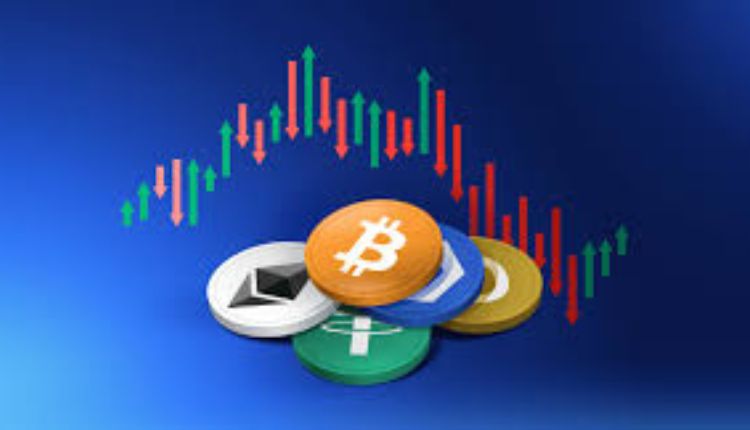This is a very common question, since people looking for passive income in DeFi care about the balance between rewards and risks. Yield farming entails locking/staking one’s crypto assets into protocols that pay fees, interest, governance tokens, or other incentives. In the simplest terms, it’s locking your idle assets so that they earn more over time. However, this depends heavily on strategy, protocol selection, token economics, and risk exposure.
Working of Yield Farming
The general idea behind yield farming is to provide liquidity to DEXs by staking tokens in smart contracts, lending assets, or working with liquidity pools. Smart contracts hold your locked assets and reward you based on your contribution to that pool or stake. Yield farming can earn transaction fees, newly created tokens, or platform reward tokens. Some yield farming is simple: stake stablecoins; others are more involved: jump between pools, stake LP tokens in yield farms, auto-compound rewards, and optimize for the highest APY.
Factors To Consider When Picking The Best Yield Farming Crypto
Risk-Reward Potential: How much yield (APR or APY) does the protocol offer? Stablecoins tend to pay lower rates, but they are usually considered safer. There is also volatility in token pools offering higher returns but more risk. Impermanent Loss Risk: If you provide liquidity in a pair of tokens and the price begins to change differently across tokens, you can be at risk of losing compared to just holding the tokens. Protocol Security: Audits, track records, code quality, risk of rug pulls or exploits. Tokenomics: Inflation of the reward token, how many tokens are going to be released and on what schedule, token burn, or revenue sharing. Liquidity & Volume: Pools need sufficient liquidity so that your funds don’t lock in illiquid pools and are fairly distributed as rewards. Cost and Fees: Gas fee, transaction cost, slippage, withdrawal penalty, or lock-up period—they all matter as they can eat into potential yield.
Popular Strategies in Yield Farming
Stablecoin Farming: Farming pairs such as USDC/USDT or other stablecoin pools for low risk and steady yield. Volatile Token Farming: Farming using volatile pairs; higher reward, higher risk. LP Staking: When you provide liquidity, you may obtain LP tokens, which you usually can stake elsewhere for additional returns. Auto-compounding: Protocols or vaults that take your rewards and reinvest them automatically to improve yield over time. Revenue Sharing/Profit Sharing Tokens: Tokens that provide you with a share of the platform’s revenue by simply holding or staking them, which is akin to yield farming without the requirement of providing liquidity
Risks Involved With Yield Farming
Smart Contract Risks: Bugs found in the contract or nasty bugs can lead to death. Impermanent Loss: When token prices diverge drastically, losses start to accumulate. Gas Costs/Transaction Costs: There are high transaction or gas costs on some chains that may obliterate any small gain. Token Dumping Risk: The reward token may be rapidly dumped should the supply be large or the demand be weak. Security Scams and Rug Pulls: Some pools or farms are either not secure or possess malicious features hidden deliberately.
GoodCrypto and Its Role in Identifying the Best Yield Farming Crypto
GOOD Token offers a yield farming structure, a mechanism for profit sharing, and utility within the platform.
GOOD token has different functions within the ecosystem; it can be burnt or utilized for yield farming, plus GOOD holders receive revenue distributions. Some functionality: GOOD holders can receive revenue shares from swap fees collected on the DEX; the more trades that pass through the GoodCryptoX, the higher the revenue that is shared. From a yield farming perspective, the team is basically providing a token that is supposed to generate yield through revenue sharing, plus a utility as a platform token.
The GOOD token in GoodCryptoX was designed to grant holders who stake or hold a minimum eligibility to revenue share from DEX fees. Other features of the GOOD tokens are token burn mechanisms and trading fee discounts. Then, there are also trading rewards that enhance yields further as time goes by. Given that a percentage of platform revenue is redistributed to holders, it is often stated that holding GOOD is amongst the strongest, if not the strongest, yield-farming cryptos for those who would rather maintain a little-lower-risk status than go for some other LP-farming types.
Putting it on a scale of yield farming will give you a way of comparing the GOOD token approach: Lower active management if you consider LP farms, where you must pick pools, check token divergence, and worry about gas fees. Revenue sharing tends to provide more predictable returns than speculative high-APY pools but is generally less spectacular. High yields on volatile liquidity pool farms can be very tempting but risky during a bear market or a drop in token price; rev-share tokens might hold their value better.
Safe Yield-Generation Strategies
Diversify your farms: do not put all your capital in a single protocol. Auto-compounding should be activated where available, allowing your rewards to grow exponentially over time. Be mindful of fees and gas: choose chains or pools where transaction costs do not eat into the yields. Prepare an exit strategy: set some stop losses or have the steps to convert into stablecoin or other less volatile assets in mind for when the market starts crashing. Beware of rewards that sound too delicious to be real—often, they conceal really great risk. Work through smart contract audits or use protocols you can confidently trust.
The Key Differentiators of the GOOD Token Amongst the Top Yield Farming Cryptos
Consistent revenue sharing, transparent tokenomics, and utility across platform functions such as token swapping or trading discounts, token burns, and trading rewards: all these combine to make GOOD relatively stable compared to its yield farming counterparts. Less about chasing the triple-digit APRs, the GOOD Token equilibrium rests on a dance of utility, revenue share, and lower volatility.
Last Words About Making an Optimal Choice for Yield Farming Crypto
When trying to find the best yield farming crypto, there really is no one-size-fits-all type of response. Your parameters matter: are you chasing maximum yield, or preserving capital, or seeking stable returns? GOOD token shows how revenue-sharing mechanisms can be great contenders when weighing yield vs. risk. Yield farming can multiply returns—but only if done correctly, with good security practices, diversification, understanding of impermanent loss, and a very clear tokenomics path. Tools like GoodCrypto help in tracking strategies, comparing yield opportunities, setting alerts for portfolio impact, and decision-making based on data rather than hype. If you align strategy with risk tolerance and use sound software intent platforms designed for it, then the best yield farming crypto for you might well be one offering a steady reward with security and appreciation in time.
Hopefully, this can clearly bring a little more insight to your questions! Moving on, I will be stating a few more top picks of yield farming interfaces that are not to be missed.






